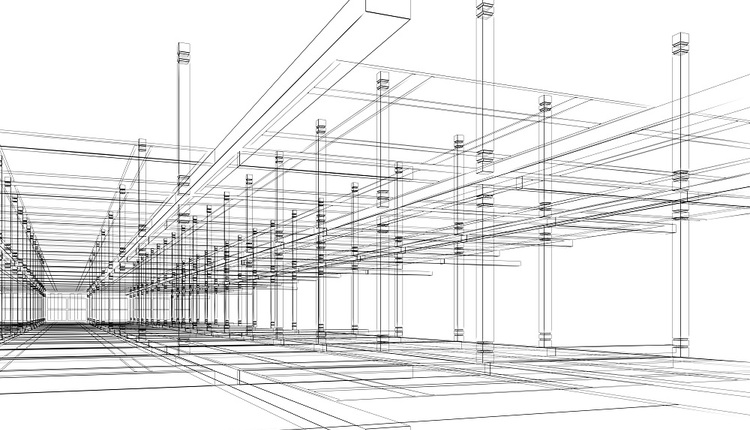Editor's Note: Did you miss part one of this series? You can view it
You have created a distribution network plan that incorporates your “go to market” strategy, inventory and logistics strategies, and supports your customers’ expectations. Now what? Some logistics professionals are hesitant to take this next step, fearing the task to be too daunting, but the process doesn’t have to be like that. For the purpose of this article, we will assume the plan is to add new locations and/or reduce or move current location(s). Why would a plan have you doing this? Maybe it is because your customers’ expectations have changed to expecting product sooner, and the plan supports that it is less costly to add a warehouse closer to the customers than it is to ship next day air (or vice versa). Perhaps your analysis suggests that the current locations are not in the right place to reach your current customer base as well as you could be doing. Or maybe the plan suggests that you have more warehouses than you need/can afford. Whatever the reason, if you accept the plan, there are a number of steps that you need to do to implement it.
Step One
Create a cross-functional team, and develop a budget! All areas of the business need to be represented in this endeavor. Business will be impacted, and everyone needs to be on the same page as to what those impacts are and be prepared for them.
Step Two
You need to prioritize the order in which you are going to implement your new strategies. Which new location provides you with the most bang for your buck? Look for the density of customers who will get an improvement on time in transit. This is a key step where the footprint maps of your carriers comes into play.
Step Three
You need to select a new location. You have determined the area that you want to add; now you need to narrow it down to the actual city/location. This is where you can have cities vie for your relocation. Incentives can be offered, such as workforce training dollars, low interest loans to help you with your move, grants for adding new jobs in the area, etc. One thing to keep in mind is where your carriers are located. A rule of thumb that I use is to stay within a 30-minute circle of where your primary carriers are located to allow for the latest pickup times available. If your primary carrier is a parcel carrier, also make sure that the hub you are locating by is one that has all of the sorts! You want to be serviced out of the main hub – not a spoke! Another thing to note is the caliber of the local workforce as well as the availability of enough employees.
Step Four
You now need to make the decision between leasing and buying. Look for guidance from your company’s strategy around real estate. Is leasing more preferable than buying/building? The time to open a leased building is typically half the time it takes to build or purchase your own building. A rule of thumb is that by leasing a new building, you can be up and running within six months. Purchasing can take up to a year due to additional time on due diligence regarding environmental studies, title research, and closing of the sale. Building your own building can take up to two years depending on the area that you relocate to.
Step Five
Let’s say that you have decided to lease your new facilities. Now that you have chosen an area, you need to start your search for available buildings. You should engage a local real estate agent to work on your behalf. They can provide a market report to let you know what the going lease rate in the area is, what types of buildings are available, and how quickly buildings are being leased. This can be important, as it indicates whether the area is growing or not as well as how competitive the market is. Nice to know when you are going into negotiations on a building! Some other things to look for:
*Height of the buildings – rent is calculated on square footage (not cubic), so if your operation allows for taller racking, you will get more “bang for your buck” out of real estate to go up instead of out.
*Number of dock doors – make sure you plan for growth here.
*Size of the office – office rent is more expensive than warehouse rent, so if you can minimize the office area to actual need, you can save on the overall rent
*Length of the lease – what is the going lease length in the area? Typically, the longer the lease, the lower the rent you can negotiate. A good rule of thumb for distribution center leases are for at least three years and sometimes as long as 10. Make sure that you get your return on investment on the startup of the operations within your lease term! Look for expandability within the building that you are leasing — after all, moving is expensive! It is easier and less costly to expand into a new space within the current building. Also make sure your lease allows you an out in case the market turns south as well as an extension in case business stays good or grows!
*Go by the areas you are considering at night to get a better sense of the area’s security. This is especially important if your operations are more than one shift.
Step Six
Hire your startup team! It is important to have some of your current employees relocate to the new location if you want to preserve/expand your company culture to this new location. Having current employees relocate also helps you to hit the ground running on operations since they are familiar with how the company operates. It is a good idea to have approximately 10% or more of your new workforce be current employees that relocate. Also leave some of the higher-paying leadership type positions available for new hires from the local area so that you can attract new hires that have potential. It allows local employees to see possibilities of advancement.
Step Seven
This is where the cross-functional team comes into play. You need to create your racking plan, operations plan, office layout, etc. You will be working with your landlord on tenant improvements based on your plans. You will be pulling permits to get your stuff installed. You need to get a local business license and an occupancy permit. All the details of opening a new location occur in this step! The website for the city that you are relocating or expanding into is a helpful resource for finding out all you need to do. The landlord should also provide you with information about the local utilities, suppliers, etc. to help you get set up.
Lastly and more importantly — be sure to provide communication to your customers about your new location and how it is going to service them. The key thing they will want to know is when you will be open for business and how it will benefit them!
Kim Brown is Director of Distribution, Quality Bicycle Products. She can be reached at









